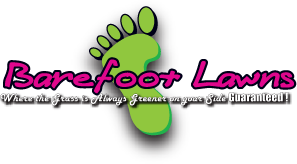Understanding the Importance of Integrated Pest Control and Lawn Care
Integrated pest control paired with careful lawn care forms the backbone of robust outdoor space management. Combining these two strategies means not only addressing the immediate concerns of pest invasions but also establishing a foundation for sustained lawn resilience and beauty. By embracing an integrated approach, homeowners and business managers create healthier environments that enjoy the benefits of natural pest regulation and enhanced turf health.
When we speak of boise pest control, it isn’t just about eliminating nuisances—it’s about understanding the relationship between pest activity and lawn vigor. Pests such as grubs, aphids, and other insects can severely undermine the lawn’s root system, weakening your turf and leading to visible stress or uneven growth. In turn, stressed lawns create inviting conditions for pests, establishing a cycle that can deteriorate the overall outdoor experience.
Proactive maintenance, from timely aeration and moisture management to targeted pest treatments, plays a critical role in keeping this cycle at bay. A few considerations include:
- Monitoring and identifying pest activity early to prevent widespread infestations.
- Employing sustainable strategies that minimize chemical use, in favor of ecological balance.
- Implementing routine lawn care practices, such as regular mowing and fertilizing, to enhance turf density and resilience.
This dual focus is especially important in regions like Nampa, Idaho, where seasonal shifts and local environmental factors can intensify pest challenges. Homeowners and businesses who commit to this integrated approach not only protect their property but also nurture a living, breathing ecosystem. For more detailed insights into modern pest control techniques, readers might find resources like the comprehensive guides available at
this expert site beneficial.
Ultimately, adopting integrated pest control and lawn care strategies isn’t just an operational improvement—it’s an investment in a greener, healthier outdoor space that stands the test of time.
Identifying Common Lawn and Pest Issues in the Treasure Valley
- Identify common pest challenges and lawn issues prevalent in the Treasure Valley
- Detailed overview of pests affecting lawns and trees, with emphasis on approaches to boise pest control
- Step-by-step methods for recognizing signs of infestations and lawn stress
- Highlight local environmental factors from regions such as Boise and Nampa, Idaho, United States
Strategies and Techniques for Effective Pest and Lawn Management
Managing pests while ensuring a vibrant, healthy lawn requires a thoughtful combination of proactive strategies and proven maintenance techniques. In this section, we explore several methods that homeowners and property managers in the Treasure Valley can implement to create a resilient outdoor environment.
One effective approach is to integrate regular aeration with targeted grub control treatments. Aeration, a technique designed to improve soil permeability and encourage robust root growth, naturally supports the lawn’s ability to withstand pest attacks. When paired with grub control, which addresses the underlying issues created by pest activity, these measures form the groundwork for a sustainable pest management plan.
Here are some practical steps to elevate your pest control and lawn maintenance routine:
- Regular Inspections: Periodically check your outdoor spaces for early signs of infestation or stress. Look for discolored patches, thinning turf, or visible pest activity to catch issues before they develop further.
- Effective Aeration: By loosening the compaction in your soil, you encourage better water and nutrient absorption. This technique not only boosts lawn health but also creates less favorable conditions for pests.
- Targeted Treatment: Apply grub control and pest management solutions in a timely manner. These treatments, when used judiciously based on seasonal trends, help reduce infestations without overwhelming your lawn with chemicals.
- Routine Irrigation and Tree Servicing: A well-planned irrigation schedule supplemented by routine tree care can significantly influence your landscape’s resistance to pests. Both approaches work hand in hand to maintain lush, robust growth while keeping pest populations under control.
Seasonal adjustments also play an important role. Transitioning your strategies with the shifts in weather—for instance, intensifying inspections and treatments during warmer months—helps to preempt possible outbreaks. For a more detailed explanation of how seasonal dynamics affect pest populations and lawn vitality, you might consider exploring further insights from trusted resources such as the EPA’s pesticide information.
As you refine your lawn care routine, remember that the core of effective management lies in consistency and responsiveness. Adapt these techniques to the unique challenges of your local environment, and over time, you’ll notice a significant improvement in both your lawn’s appearance and its overall health.
Key Takeaways for a Healthier Outdoor Space
Achieving a thriving, pest-resistant yard demands a blend of foresight and disciplined upkeep. For homeowners and business owners alike, the practices outlined below serve as a reminder that the real strength of your outdoor space lies in steady attention and adaptive care routines.
Consider incorporating these actionable steps into your regular routine:
- Conduct Seasonal Inspections: Regularly tour your yard to spot discoloration, thinning grass, or early signs of pest intrusion. Prompt attention can dramatically reduce the likelihood of larger issues down the road.
- Schedule Routine Maintenance: Commit to regular mowing, fertilizing, and aeration. Keeping your lawn well-maintained strengthens its resilience against pest infestation and environmental stress.
- Optimize Your Watering Practices: Instead of frequent shallow watering, opt for deep, infrequent sessions. This encourages robust root development and creates less inviting conditions for pests.
-
Adopt Integrated Pest Management: Blend targeted pest control techniques—using non-chemical approaches where possible—with your general lawn care measures. For additional strategies on this balanced approach, check out
this detailed guide on integrated pest management. - Stay Adaptable: Adjust your practices based on seasonal shifts and local environmental factors. This proactive mindset ensures your lawn care routine remains effective year-round.
This holistic approach not only safeguards your outdoor spaces but also lays the groundwork for a consistently healthy, vibrant lawn. By keeping up with regular check-ups and embracing sustainable practices, you invest in an environment that thrives naturally and stands firm against the challenges of every season.
